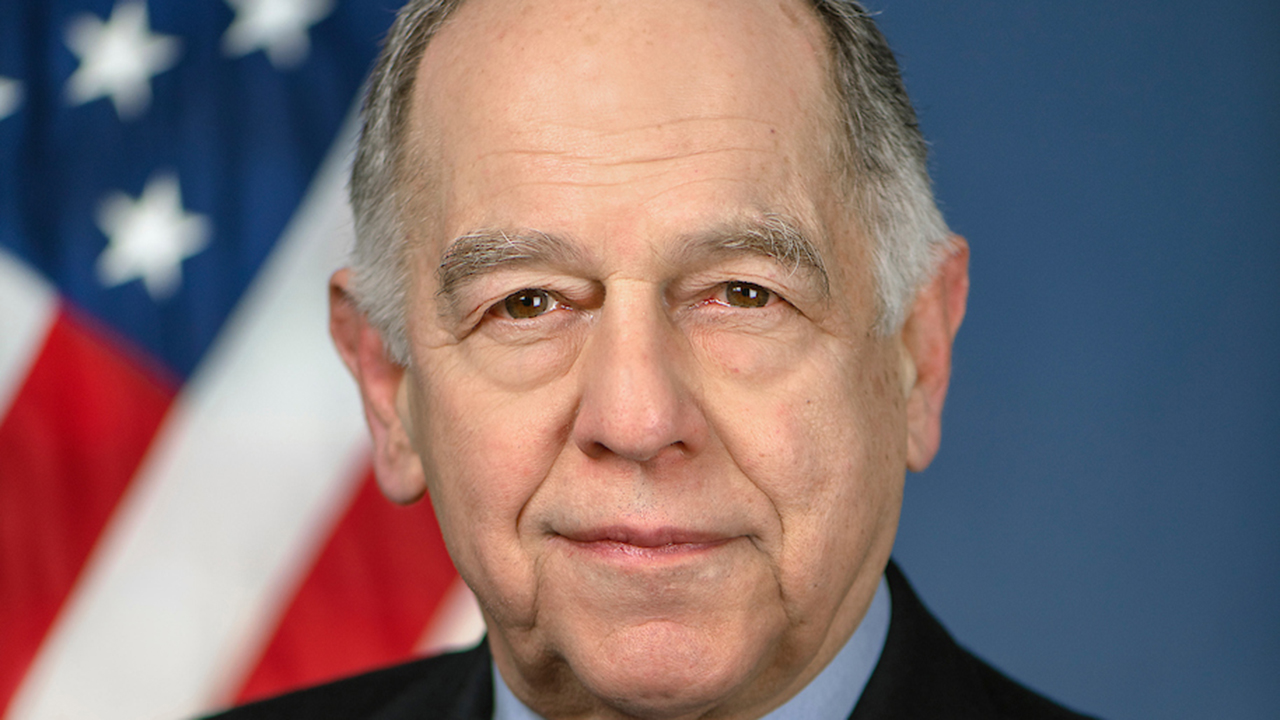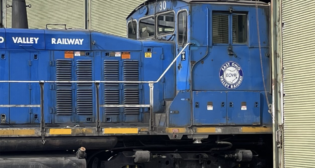
STB’s Torment of Precautions
Written by Frank N. Wilner, Capitol Hill Contributing Editor
STB Chairman Martin J. Oberman
WATCHING WASHINGTON, RAILWAY AGE, NOVEMBER 2023 ISSUE: Napoleon Bonaparte observed that “the torment of precautions often exceeds the dangers to be avoided.” Union Army General George B. McClellan was so tormented that he failed to pursue the Confederate army more aggressively. Most recently, the Surface Transportation Board (STB) appears afflicted with the torment—immobilized to take definitive action to protect captive shippers (those lacking effective transportation alternatives to a single railroad) from rail market power abuse.
Beyond a few individual aggrieved shippers receiving relief and periodic pro-shipper policy pronouncements, the Board has not significantly altered what captive shippers consider a decades-long railroad bias.
Yes, the STB’s statutory priority is allowing railroads to earn adequate revenue to ensure a competitive return on invested capital. But that provision of the 1980 Staggers Rail Act also instructs the STB to police rail ratemaking where there is an absence of effective competition.
Evidence abounds that Class I railroads (the majors collecting some 95% of freight revenue) have long been revenue-adequate. Beyond STB analysis finding them so, railroads have rewarded investors by spending tens of billions of dollars in excess cash to boost stock price through share repurchases and dividend hikes, plus paid tens of billions more to acquire competitors.
Examples are CSX and Norfolk Southern paying a $14 billion premium over asset value in 1998 to acquire Conrail; conglomerate Berkshire Hathaway paying $22 billion above market value in 2010 to purchase BNSF; and hedge funds Children’s Investment, Pershing Square and Mantle Ridge spending additional billions to obtain substantial ownership stakes in Class I’s so as to share in the profits.
Department of Justice Antitrust Division economist Russell Pittman, emphasizing he speaks for himself only, is particularly critical of investment funds “forcing companies to do too much profit maximizing in the very short run”—an example being unrelenting emphasis on lowering operating ratios—to the impairment of service quality.
Pittman personally views increased rail market power, higher rail rates and increased rail profitability as feeding upon one another. Between 1980 and 2000, mergers helped reduce the number of Class I railroads from some three dozen to just seven, creating a pair of duopolies in the East and West. The number of captive shippers—especially those of bulk grains, chemicals and coal—grew. Rail rates reversed a downward trend and “increased significantly after 2000,” Pittman says, with a “rapid increase” in rail profitability beginning in 2004 as shippers’ competitive options were foreclosed.

The result of these mergers is two mammoth regional duopolies in which neither duopolist aggressively seeks to poach business from the other.
– Russell Pittman, DOJ Antitrust Division
Many rail mergers should have been disallowed, Pittman says, or had more competition-enhancing conditions imposed to prevent the resulting duopolists from tacitly colluding rather than competing. “The result of these mergers is two mammoth regional duopolies in which neither duopolist aggressively seeks to poach business from the other.”
While the Clayton Antitrust Act prohibits mergers that would lessen competition, it exempts railroad combinations approved by the ICC and STB. Although the 1980 Staggers Rail Act instructed rail regulators to give DOJ opinions on rail mergers “substantial weight,” the STB approved a 1997 Union Pacific-Southern Pacific combination over DOJ objections, and in others imposed less restrictive conditions than DOJ recommended. Had rail merger authority been under DOJ jurisdiction, “the rail industry likely would be more competitive today,” Pittman says, lamenting that “undesirable outcomes are not challengeable.”
Of current interest to Pittman are future mergers among the duopolists—CSX or Norfolk Southern in the East combining with BNSF or Union Pacific in the West to create Atlantic-Pacific transcontinentals. “No one disagrees that end-to-end rail mergers have the potential to increase efficiency,” Pittman says. But they “run the risk of forfeiting other aspects of competition that have value for the economy—in technological and service improvements, or in competition to provide incentives for new shippers to locate on a particular line.”
So, what are some remedies to taming rail market power abuse?
The STB could mandate—where market power abuse is demonstrated—that the sole-serving railroad interchange the captive shipper’s railcars with a second railroad at a feasible junction point (known as “reciprocal switching”). This allows for negotiation of a lower rate on the longer linehaul segment where two railroads compete. To retain the entire-length haul, the sole-serving railroad would be pressured to quote more competitive origin-destination rates.
A second remedy is rate unbundling—the STB requiring the sole-serving railroad to quote a separate rate for the bottleneck segment rather than offer only an origin-to-destination rate. This similarly allows a shipper to negotiate a lower linehaul rate with a second carrier—mirroring what the Federal Communications Commission and Federal Energy Regulatory Commission mandate of telecommunications, wholesale electric power and natural gas carriers.
Although Pittman is skeptical a second railroad will quote a competitive linehaul rate to gain the traffic—fearing retaliation—academic studies suggest duopolists can and do compete. Among examples is Union Pacific’s poaching from a BNSF predecessor a long-term coal hauling contract after gaining second-railroad access to Wyoming’s Powder River Basin coal fields.
Here, again, the STB has been indecisive. In September, it summarily terminated—and without explanation—a market power abuse standard that would allow reciprocal switching or rate unbundling in favor of a trigger linked to exceptionally severe service failures. The revised remedy would only be available if a railroad’s service level dropped below an arbitrarily set low point. The new rulemaking is unlikely to result in creation of minimum service standards for what constitutes adequate service.
The STB’s sudden and unexplained shift away from imposing competitive remedies in favor of relief for specific service failures “sucked all oxygen out of the room,” a shipper official told Railway Age. University of Saskatchewan economist James Nolan, who follows U.S. rail regulation, views it as a license “to charge more and more” for maintaining a level of service better only than previously low points.

‘If railroads are so tightly priced everywhere that they cannot afford to give’ anything back to shippers, then they have a defense.
– James Nolan, University of Saskatchewan
By limiting focus to very narrow service metrics, the STB, says Nolan, created an “unintended consequence” of perpetuating railroad market-power abuse—“a massive regulatory failure by an agency unwilling to provide either the effort or public service for which it exists.”
An alternative to reciprocal switching and rate unbundling remedies is imposing a limit on future rail rate increases. “If railroads are so tightly priced everywhere that they cannot afford to give” anything back to shippers, then they have a defense, Nolan says.
But few beyond railroads and their investors would accept the notion. The STB “has to create a rate ceiling,” Pittman says.
A 2015 STB reauthorization by Congress instructed the agency to develop at least one “simplified and expedited” test for determining rate reasonableness in place of a Stand-Alone Cost (SAC) test that has become cost-prohibitive to all but the very largest shippers—and even they have lost confidence in the SAC test. Pittman calls the SAC test “not good economics,” and the economist who developed it, Gerald R. Faulhaber, says, “There are several possible right answers to test for rate reasonableness, but the current SAC [test] is without a doubt the wrong answer.”
Although the STB adopted a Final Offer Rate Review (FORR) by which it would choose, without modification, one of simultaneously submitted final offers, FORR is intended only for small shipment disputes and lacks shipper support. Another approach could be what Nolan describes as “commodity-specific markups above variable costs.” The STB has been indecisive in meeting the 2015 congressional directive.
Many, including some U.S. Senators, question whether STB Chairperson Martin J. Oberman, who controls the STB docket, is talking the talk without walking the walk. In 2021, Oberman expressed “concerns with the sufficiency” of rail competition and an “interest in exploring ways the Board can improve the rail industry’s competitive landscape in order to ensure fairer pricing.” A question raised is why that intention has gone largely unfulfilled—one only Oberman can answer.

As Oberman’s first term expires Dec. 31, and he is seeking from President Biden a second-term nomination, sensitivity to individual Senator concerns that align with those of captive shippers is essential as it takes only one Senator to place a “hold” on a second-term confirmation vote.
Frank N. Wilner’s new book, Railroads & Economic Regulation, is available from Simmons-Boardman Books at www.transalert.com, 800-228-9670.



